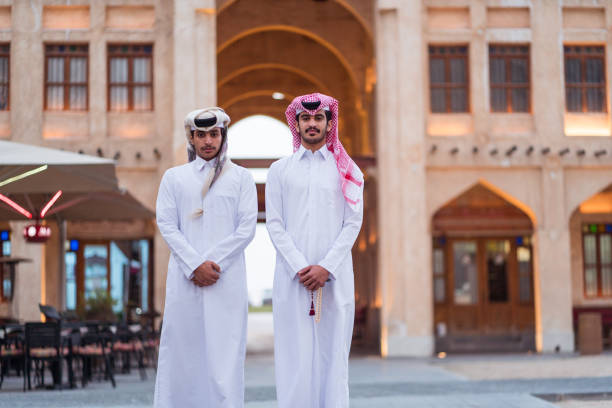In a world where fashion often transcends borders and cultures intertwine, the Omani thobe stands out not just as an article of clothing, but as a vibrant tapestry woven with history, tradition, and identity. For those in the UK—where multiculturalism flourishes—the thobe represents more than mere fabric; it embodies a rich heritage that sparks curiosity and admiration. Join us on this journey as we explore the cultural significance of Omani thobes through British eyes, uncovering stories that bridge continents and highlight how these elegant garments serve as symbols of pride, unity, and craftsmanship in both Oman and beyond. Whether you’re a fashion enthusiast or simply eager to learn about global customs, this exploration promises to reveal the profound connections that can be found in every stitch!
Introduction to Omani Thobes and their cultural significance
Step into the vibrant world of Omani thobes, where tradition meets modernity in a stunning display of cultural identity. These elegant garments are not just clothing; they embody centuries of history, artistry, and significance that resonate deeply with those who wear them. For the British-Omani community and fashion enthusiasts alike, Omani thobes represent a bridge between two rich cultures.
As we delve into their journey within the UK, you’ll discover how these exquisite pieces have evolved over time. From their historical roots to contemporary interpretations, this exploration reveals much more than fabric—it highlights stories of heritage and pride. Join us as we unravel the complex tapestry of Omani thobes UK, celebrating their role in embracing cultural diversity through fashion.
History of Omani Thobes in the UK
The journey of Omani thobes in the UK is a fascinating tale woven through migration and cultural exchange. As Omanis settled in various parts of the UK, they brought their traditional attire with them. The thobe quickly became a symbol of identity for many.
In cities like London and Manchester, these garments stood out in vibrant colors and intricate designs. They caught the attention of locals curious about Middle Eastern culture.
Over time, events such as festivals and community gatherings showcased these elegant pieces to wider audiences mens thobe. British fashion enthusiasts began to appreciate not just the aesthetics but also the craftsmanship behind each thobe.
With exposure comes evolution. Some styles incorporated modern elements while preserving their roots, sparking interest across diverse communities in Britain. This blending highlights both tradition and innovation within Omani fashion on UK soil.
Differences between traditional and modern Omani Thobes
Traditional Omani thobes are characterized by their flowing silhouette and intricate embroidery. Made from lightweight fabrics, they often feature vibrant colors and patterns that reflect regional identity. These garments embody heritage, worn during special occasions and religious ceremonies.
In contrast, modern Omani thobes have evolved to incorporate contemporary styles and materials. Designers now experiment with cuts, adding tailored elements for a more fitted look. This shift allows wearers to express individuality while maintaining cultural roots.
The fabric choices have also expanded. Synthetic blends offer comfort and versatility in everyday settings, catering to the dynamic lifestyles of younger generations.
Additionally, while traditional thobes emphasize craftsmanship passed down through generations, modern designs embrace global influences. The blend of tradition with innovation creates a unique fashion statement that resonates within the UK’s multicultural landscape.
How Omani Thobes are perceived in UK culture
Omani thobes have carved a niche in UK culture, often seen as symbols of elegance and tradition. British fashion enthusiasts appreciate their intricate designs and luxurious fabrics.
In urban settings like London, you might spot these garments at cultural events or festivals. They stand out against the backdrop of contemporary clothing styles, attracting admiration for their rich craftsmanship.
However, perception varies among different communities. For some, Omani thobes represent an exotic allure tied to Middle Eastern heritage. Others may associate them more closely with cultural identity and pride.
Social media plays a significant role too. Influencers showcase how to style thobes for modern occasions, blending traditional aesthetics with current trends. This visibility helps demystify the garment while fostering appreciation across diverse audiences in the UK.
The rise of Omani fashion designers in the UK
Omani fashion designers are making waves in the UK, blending traditional elements with contemporary styles. This creative fusion captures the essence of Oman while appealing to a diverse audience.
Emerging talents showcase their work at local fashion events and pop-up shops. Their designs often feature intricate patterns and rich fabrics that reflect Oman’s cultural heritage.
Social media plays a crucial role in elevating these designers’ profiles. Platforms like Instagram allow them to connect with global audiences, showcasing their unique pieces beyond traditional boundaries.
Collaborations between Omani designers and British brands highlight this growing trend. These partnerships not only celebrate culture but also introduce innovative concepts into mainstream fashion.
The rise of Omani design talent enriches the UK’s multicultural landscape, allowing for a vibrant exchange of ideas and aesthetics. As awareness grows, so does appreciation for these artistic expressions rooted in history yet relevant today.
Cultural appropriation and the impact on Omani Thobe fashion
Cultural appropriation is a sensitive topic, especially when it comes to fashion. Omani thobes carry deep cultural significance and history. When elements of this traditional attire are adopted without understanding or respect, it risks trivializing its meaning.
In the UK, some designers have drawn inspiration from Omani thobes for their collections. While celebrating diversity in fashion can be positive, it’s crucial to acknowledge the origins of these garments. Misrepresentation can lead to stereotypes rather than appreciation.
Many British-Omanis feel conflicted witnessing their heritage being commercialized. They cherish the beauty and symbolism behind each stitch but worry about losing authenticity in public perception.
This delicate balance between admiration and appropriation remains a challenge within the fashion landscape. The conversation around respecting cultural roots while embracing global influences continues to evolve as awareness grows.
Personal experiences from British-Omanis on wearing Omani Thobes in the UK
For many British-Omanis, donning an Omani thobe is a bridge between their heritage and life in the UK. The experience often brings mixed emotions—pride in showcasing one’s culture, yet a hint of apprehension about standing out.
One young professional recalls walking through London wearing her vibrant thobe. Heads turned, with curious glances quickly turning into smiles. To her surprise, it sparked conversations with strangers eager to learn more about Oman’s rich traditions.
Another individual shared how his thobe became a conversation starter at work events. Colleagues approached him not just for casual chats but to genuinely appreciate the intricacies of his attire.
These stories highlight the joy and occasional challenges faced by British-Omanis as they navigate cultural expression in a diverse society while fostering connections through their traditional clothing. Each experience adds depth to the understanding of identity within the tapestry of UK culture.
Future of Omani Thobe fashion in the UK
The future of Omani thobe fashion in the UK looks promising. As global interest in diverse cultures grows, so does appreciation for traditional attire. Designers are embracing this momentum.
Innovative blends of contemporary styles with classic designs are emerging. This fusion allows Omani thobes to cater to a broader audience while retaining their cultural essence. Such creativity invites younger generations to incorporate these garments into their wardrobes.
Social media plays a vital role too. Platforms like Instagram and TikTok showcase influencers wearing Omani thobes, highlighting their versatility for various occasions. With increased visibility comes greater acceptance within mainstream UK fashion.
Collaboration between British and Omani designers could unlock new possibilities. Unique collections featuring sustainable materials may resonate well with eco-conscious consumers eager to celebrate diversity through style.
Conclusion: Celebrating cultural diversity through fashion
The Omani thobe is more than just a garment; it represents the rich tapestry of culture, tradition, and identity. As the UK embraces multiculturalism, these garments have carved out their unique place in British society.
From historical roots to contemporary fashion statements, Omani thobes reflect how cultures can intertwine while retaining their distinctiveness. The rise of Omani designers in the UK showcases this blend beautifully—creating pieces that honor traditional craftsmanship while appealing to modern tastes.
Cultural appropriation remains a sensitive topic, especially regarding fashion. It’s crucial for appreciation rather than imitation to be at the forefront. By understanding and respecting the origins of clothing like the thobe, we foster genuine cultural exchange.
British-Omanis express pride when wearing their traditional attire in diverse settings around the UK. Their experiences emphasize not only personal connections but also an invitation for dialogue about heritage and belonging.
As we look ahead, it’s exciting to envision how Omani thobes will continue to evolve within British fashion scenes—bridging gaps between traditions and contemporary lifestyles while celebrating diversity through style.
Fashion serves as a powerful medium for storytelling—a way to connect with one another beyond borders and backgrounds. Embracing garments like the Omani thobe enhances our shared cultural experience and reminds us that every thread tells a story worth sharing.



